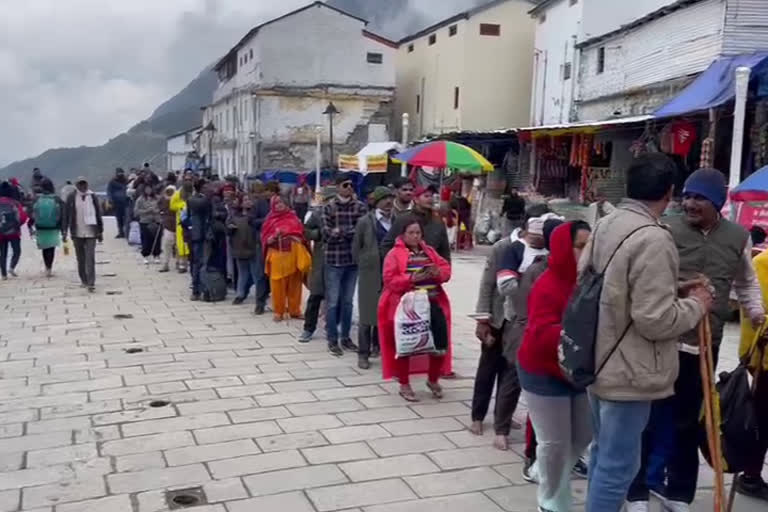Dehradun: After the death of 32 pilgrims since the initiation of the Chardham Yatra in Uttarakhand this year on May 3, the State, as well as the Central government, have taken cognizance of the matter. So far, the highest number of deaths (13) have occurred in Yamunotri Dham. While medical professionals in the state have pointed toward altitude sickness, high blood pressure and heart attacks as the possible reasons behind these deaths, the last has far overshadowed the former among the recent tragic ends for many a devotee.
The figures display a direct correlation with age, as three devotees between the age group of 30 to 40 years have lost their lives so far. Meanwhile, four pilgrims above the age of 40 and up to 50 have lost their lives. Nine devotees between the age of 50 and 60 years have died. A significant upthrust in demises was noticed, however, in the next age group as 13 patients up to 76 years of age perished during their Chardham journey. Most of the deaths have occurred in the Yamunotri pedestrian route and Kedarnath. Most deaths were recorded among devotees coming from states located in plains, rather than Uttarakhand or other Himalayan states.
Also read: Death defying: Tractors on Kedarnath walkway, video goes viral
On Friday, the state health department began, on instructions of CM Pushkar Singh Dhami, health screenings at the registration site of the religious Yatra. It additionally sent one cardiac van to address any medical emergencies to Gangotri and Yamunotri Dhams. Speaking to ETV Bharat, Dr. Amar Upadhyay, Senior Cardiologist at the Doon Medical College, highlighted controllers such as pre-existing heart conditions, sudden differences in atmospheric temperature, and thickening of blood behind heart attacks prevailing among devotees.
"With temperatures falling, both heart rate and blood pressure increase. Chances of blood thickening, too, are prevalent in higher altitudes; places which are colder and have lesser amounts of oxygen. The immediate need for patients of heart attack is to get medical attention, for which they should be educated. Devotees coming from outside do not know who to see and where to go. Where (devotees) are from, the atmospheric temperature is usually mild. If the body is not able to adjust itself to the temperature, it leads to heart attacks," Upadhyay said.
He further highlighted that the parameters for such a medical emergency are timed, and efforts should be made to minimalize the difference between heart pain and detection through an ECG test. "An initial remedy can be intaking blood thinners, such as commonly used tablets like Disprin or Aspirin. They, however, need to be brought as soon as possible to an ECG test, and subsequently to a cardiologist for treatment," he stated.
Also read: In a first, NDRF deployed to handle arrangements in Chardham Yatra
An obstacle in this matter, however, has been the lack of cardiologists in the Himalayan state. Speaking to the media, Uttarakhand Chief Secretary SS Sandhu admitted to the scarcity on Friday. "The health department has tried their best to get as many cardiologists as possible, but the wanton situation, nonetheless, is still persisting. Despite offering more remuneration than the average state, we are unable to assign more cardiologists. Many physicians, instead, have been provided cardiology training for two weeks or three weeks before being sent up there," Sandhu noted.



